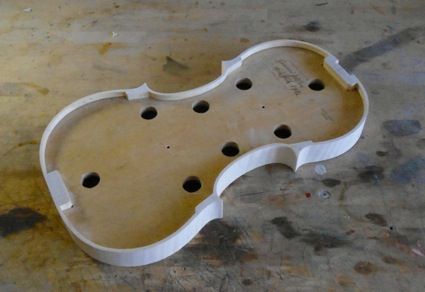In the workshop, I’ve been busy varnishing a Stradivari model cello and another Guarneri violin on order. My assistant in the next room is making a copy of a viola made by G.P. Maggini in Brescia from the early 1600’s.
The work of Stradivari and Guarneri vary in many ways but the construction methods used were most likely very similar. Both makers worked in Cremona with their houses on the same street using methods developed earlier by the Amati family. In Brescia, just 50km away from Cremona, the makers had their own tradition and methods of making instruments. So I wanted to have the Maggini model viola made using a different method than the violin and cello – not just a Brescian style viola made in a Cremonese way.
A key element of the Cremonese method is the internal form. Above are the sides of my next Guarneri copy. The sides were built around an internal form. Once the sides are complete, the form is removed to be used for the next violin. This gives some consistency to the shape and dimensions of each violin.
As a contrast the Maggini viola was most likely built with no form. So the method we used began with carving the outside and inside of the back and gluing the sides directly to the back. (see 2 photos below)
Once the sides were finished, they were traced onto the wood for the front. The front was carved and glued to the sides, closing the box, leaving only the final edges and purfling to finish. Maggini may have used this method and judging from the asymmetry in the shape of his instruments he didn’t use an internal form.
(Though it has been proposed that Maggini may have used a small form to make the C’bout ribs because the consistent shape and size of middle bout seen on his violins and violas. We did experiment with this as well.)
The aim in using methods that the original makers may have used is to capture the feel of the original instrument, both in appearance and sound. It’s also interesting to test the theories of construction methods proposed by my colleagues to see how they work in practice and raise our own level of expertise.


